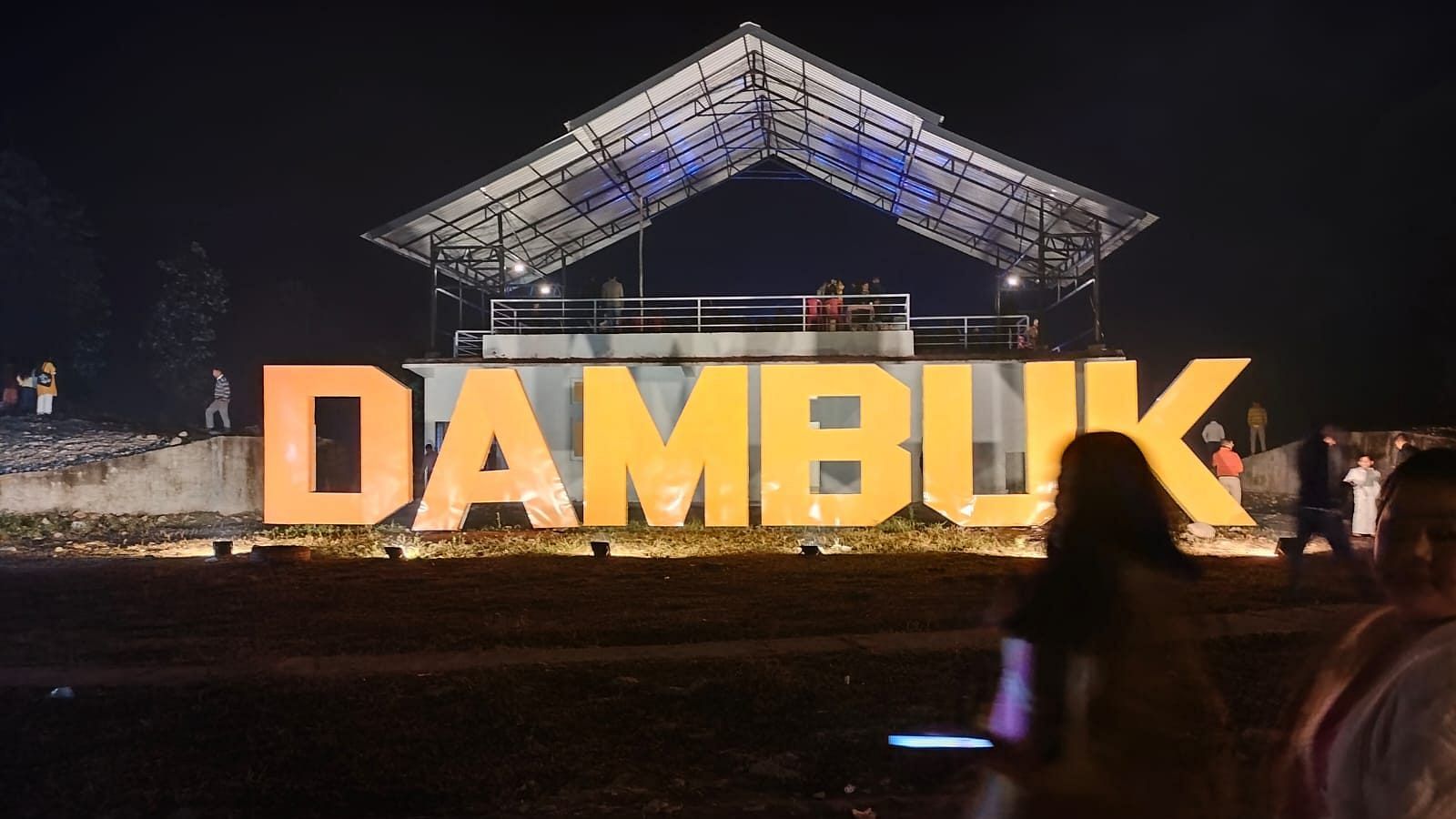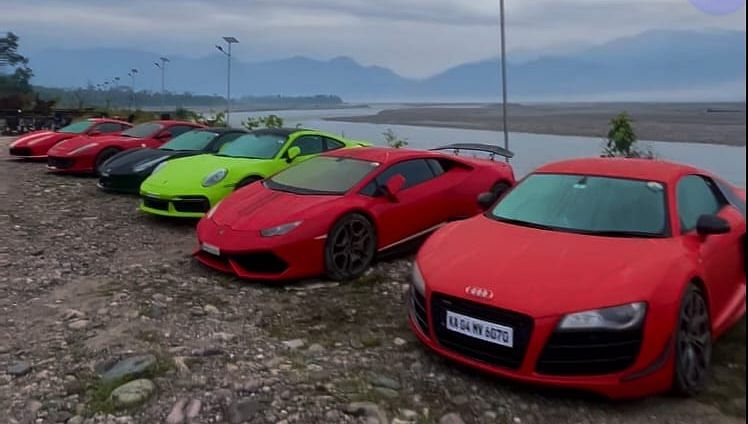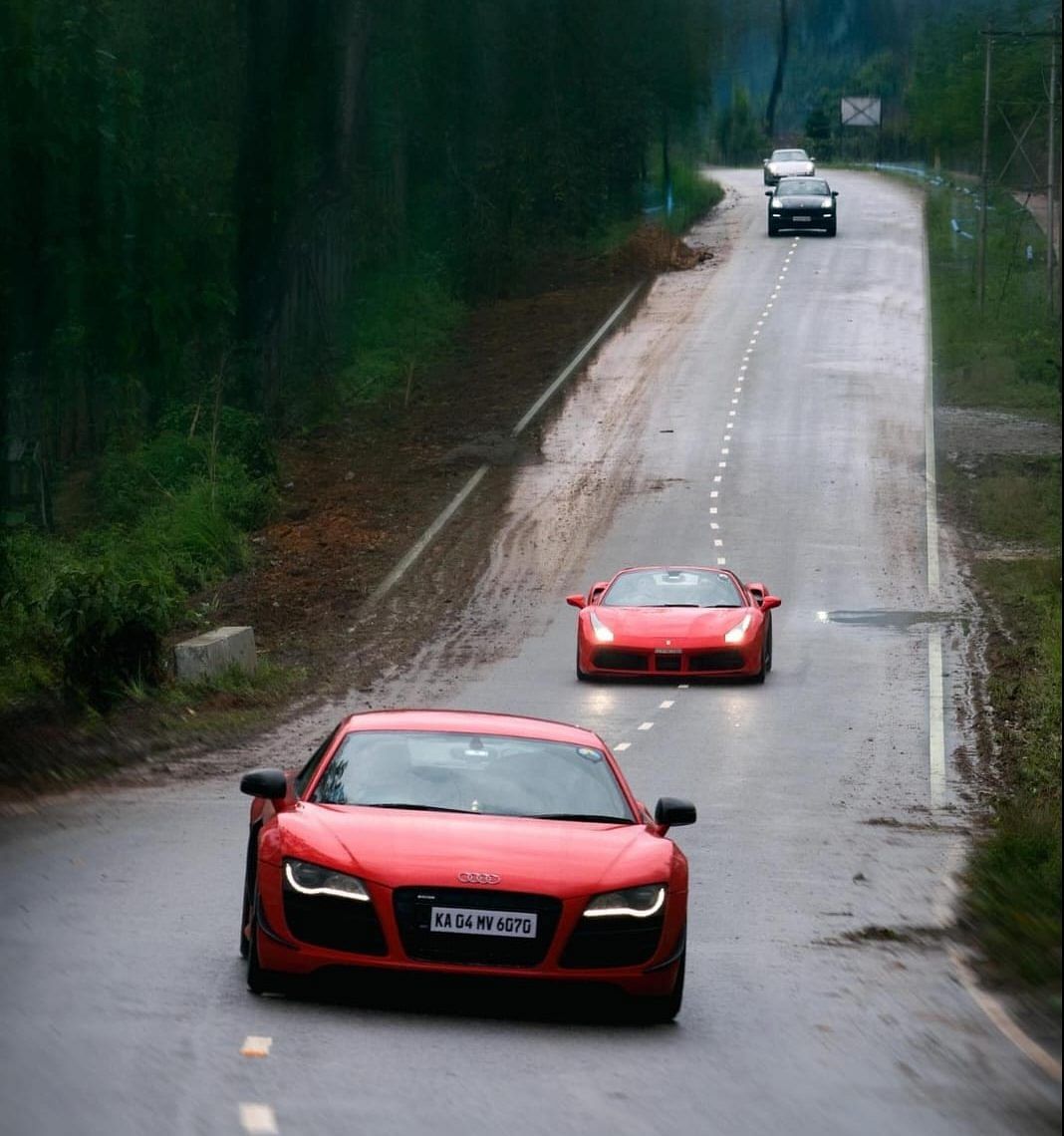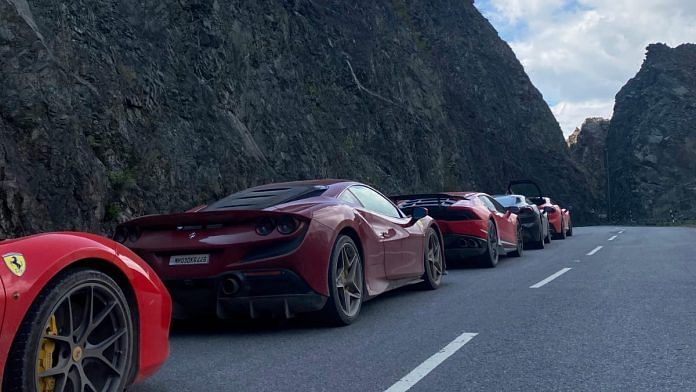When ferries and boats gave up, Lhakpa Tsering hopped on an elephant to cross the mighty Dibang River between Roing and Dambuk in Arunachal Pradesh. Eight years later, the former Kaala Paani of modern India is now a dream destination for the country’s ultra-rich. Raymond Group CEO Gautam Singhania and Rajwada Group’s Parveen Agarwal have been driving around the state in their Ferraris and Lamborghinis for the past two years.
Today, Arunachal Pradesh is India’s newest motorsport playground. It is the Davos of vroom vroom vroom.
Dambuk is where it all started. In 2015, Tsering received an invite from Abu Tayeng, the director of Orange Festival of Adventure and Music (OFAM) and currently the state secretary of sports and youth affairs.
“The organisers wanted us to arrange a car rally as part of a value-added event for the festival. But looking at the poor state of the roads, we didn’t think anything was possible here. Dambuk was literally cut off from the world,” says Tsering, the president of the motorsport club of Arunachal Pradesh. At the time, only off-roading by 4×4 cars (in which the engine powers all four wheels of the vehicle evenly) could be organised.
Arunachal Pradesh aspires to be India’s Monaco. Lohit, Dibang, and Brahmaputra, Tirap rivers can make up for the French Riviera.
Things turned around quickly. By 2021, the once-sleepy streets of Dambuk were echoing with the vroom-vroom of supercars. McLaren, Audi R8, Ferrari, Aston Martin, Porsche, Nissan GTR, Lamborghini—exotic and flashy wheels have become a common sight in the river valley region. Apart from off-roading expeditions, bike trails, and over-landing, the roads here are hardly ever crowded for 24-hour driving experience unlike other locations such as Bengaluru, Pune and New Delhi. After all, the roads are fit for it.

“Arunachal Pradesh offers a new challenge. It was once a dreaded place, cut off from the world. Now it’s transformed into a fantastic destination to be and test your wheels,” Tsering adds.
The state aspires to be India’s Monaco. Lohit, Dibang, and Brahmaputra, Tirap rivers can make up for the French Riviera.
From snow-capped mountains and meandering riverines to expansive valleys and vast plains, Arunachal Pradesh’s topography mirrors the diversity of its demography. It’s the largest northeastern state with an area of 84,000 square kilometres and a population of roughly over one million. With the rapid development of roads in the state, not only has space been created for tourists, but it has also allowed the natives to finally explore their home state.
Also read: Why you must travel to Arunachal before tourism growth makes it another Manali or Mussoorie
When the ultra-rich arrived
To push for tourism, the state organised the first 12-day Trans Arunachal Drive in 2021. It covered 2,500 kilometres—from Pangsau Pass in the east to Tawang in the west. The sight of 40 vehicles gliding on the hill roads became popular in some sections of social media. That’s when it caught the eyes of someone in the high towers of Mumbai: Gautam Hari Singhania.
The businessman and his friends from Super Car Club—besides Agarwal, Jainco Transmission Ltd managing director Atul Surana, Suhasaria Estates Pvt Ltd director Suresh Tolani, and car rental agency Monaco Experiences’ founder Viral Choksi among others—arrived in Dambuk with 13 high-end cars.
“A great driving trip much cherish,” Singhania captioned an Instagram reel of all the cars lined up by the river.
In a video uploaded on YouTube channel Explore With Pritam, the group is seen parking their cars and greeted with a folk song by women dressed in Adi tribe attire.

For four days, Dambuk resembled the remote towns of Italy. Sharp winds from Lamborghinis slapped the pigs trotting on the sidelines. Young people gathered near fuel stations, alert with their phone cameras. The former river-locked Island and the current orange bowl of Arunachal Pradesh went viral on Instagram for being ultra cool.
“I felt that we were doing something right when they (Singhania and his friends) came back again in 2022. You can’t force somebody to do that. They were really happy with what they experienced,” says Tayeng, the former director of state tourism, who hosted the seven-star crowd in his resort Zaktum Notko, at Bomjir near the banks of Dibang river.
Tayeng and others are now waiting for the Anini sector in Dibang valley, which still has a few patches of unfinished roads, to open up for travel. “I am sure these guys are going to come back again for their third trip to Arunachal,” Tayeng adds.
By 2021, the once-sleepy streets of Dambuk were echoing with the vroom-vroom of supercars. McLaren, Audi R8, Ferrari, Aston Martin, Porsche, Nissan GTR, Lamborghini—exotic and flashy wheels have become a common sight in the river valley region.
Tsering, who hosts supercar and off-roading events in cooperation with JK Tyre Motorsport, is overjoyed with the progress they have made. What started with eight cars in 2021 has now grown to 30 in 2023.
Adventure tourists visiting Arunachal Pradesh usually have a checklist of locations to explore—Changlang district, snow-blessed Mayodia, Pangsau Pass near the India-Myanmar border, Bomdila, Ziro, Dirang, and Tawang. Now that the Trans-Arunachal Highway is almost complete and other road networks are propping up, the state has high hopes for adventure tourism.
Also read: There’s a new music festival race in Northeast. Dambuk’s OFAM offers 12 genres & rice beer
An unexplored region opens up
Rishi Baruah, a driving enthusiast from Assam who is often seen flaunting his modified Tata Motors Safari on Instagram, can’t get enough of Arunachal Pradesh. He tested out his truck, named ‘Napoleon’, on unknown hills and valleys, and has discovered the “sacredness in being both lost and free”.
“Arunachal is the destination for all the adventure junkies or you can say the wanderers who love to explore the unexplored. It’s so untouched and magnificent that you drown in its beauty. I have literally never driven at a place as beautiful as this,” says Baruah.
Unlike Baruah, 28-year-old tourist driver Manoranjan from Dibrugarh experiences the thrill of driving in the hills in an Innova, given to him by a travel agency. After driving his clients around in New Delhi, Gurugram, Meghalaya, and Assam, Manoranjan has realised that Arunachal Pradesh offers the most fulfilling driving experience. Over the past five years, he has made 10-15 trips to Mayodia, Roing, and other nearby regions, travelling mostly during the peak November-January season.

“When the snow accumulates on the roads, we wrap the tires with metal chains to cut through it. It’s a scary sound for tourists in the back, who fall silent with fear. But I have my fun,” he says.
Tayeng recalls hosting a couple who drove from Mumbai to Dambuk. The husband told him that he has driven about 15 lakh kilometres across the world. “He certified that the driving routes here are comparable to the best ones in the world.”
Hospitality is another reason that makes wanderers flank Arunachal Pradesh. With the government providing homestays with Rs 5,000-10,000 subsidies, local people have become welcoming guests with open arms. Between November and March, there is a flood of bookings. Even resorts are eligible for government subsidy amounting in lakhs.
“The cultural exchange has worked wonders for the local crowd. Soch badli hai (ways of thinking have changed). And most of them are now learning the nitty-gritty of the hospitality industry. So many resorts have come up in the last couple of years,” Oman Tayeng says.
Akhil Modi, the owner of Bomjir campsite in Dambuk, started with only 15 small Decathlon tents in 2018. Now, he hosts visitors in concrete rooms near the river.
“Business has seen 60 per cent growth in the last five years; we didn’t expect this at all. Recently, a group of bikers travelled from Nashik to ride in Anini and nearby hill roads,” Modi says. While Singhania enjoyed the hospitality of Tayeng’s Zaktum Notko, his fleet of cars and support staff stayed in Modi’s campsite.
Among the travellers, 70 per cent come from Assam and West Bengal. The parking areas of homestays and resorts are lined with SUVs, modified motorbikes, and supercars.
The tourist influx encouraged Oman Tayeng to leave his job in Bengaluru and move back to his hometown Tezu in Lohit district. He now heads the Arunachal Pradesh chapter of a tourist company.
“The cultural exchange has worked wonders for the local crowd. Soch badli hai (ways of thinking have changed). And most of them are now learning the nitty-gritty of the hospitality industry. So many resorts have come up in the last couple of years,” Oman Tayeng says. This year, he introduced his native place to travel groups from Canada, the US, and Australia.
As for the overall local economy, profits have been slow but promising.
“The impact is mostly indirect. The tourism sector in the state is very new so the profit is at its initial stage. Now that the mainland and the world are getting more aware of our people and our culture, we expect the sector to go big soon,” says KN Damo, the current director of state tourism.
According to Dambuk residents, the supercars have created new employment opportunities. Transport companies, mechanics, fuel station workers—all are reaping the benefits. When it comes to high-end clientele, the requirement for support staff has gone up.
“If there are 14 supercars in one fleet, you need at least 14 people for their maintenance,” says Tsering.
Also read: Naga mom’s K-skincare wave swept India. Her Beauty Barn now competes with Nykaa, Amazon
Is everyone on board?
Arunachal Pradesh’s fresh fame in adventure tourism has also exposed its scenic beauty to exploitation. The hills are vulnerable and the state government is carrying out awareness campaigns to make young people a stakeholder in its protection.
“The biggest challenge is littering. Through Yuva Tourism Club and some waste management campaigns, we are making sure that the youth knows how important it is to preserve the sanctity of the region,” Damo says.
Oman, who gets all sparkly eyed looking at McLarens and Bugattis, doesn’t want his local streets to become racing tracks. Something about the sight of blocked roads and town people stuck in traffic jams takes away from the joy of opening your world to outsiders.
Itanagar, the state capital, has already started experiencing this discomfort.
“During May-June, the government organised a racing event in the heart of the city. It was very irresponsible of them to block the main highway. So many women and children were stuck in the traffic jam for 6-7 hours. We must protest against such things,” says Edo Mili, an advocate and environmental activist.
The state’s 80 per cent forest cover is also susceptible to the evils of road and aggressive hydropower projects. Some activists claim “ghapla” (scam) by the state government in compensatory afforestation.
“They go to decades-old lush green forests and declare it a barren land. Tree cuttings are not properly documented and people are hardly concerned. They are simply happy with all the development around,” Mili adds.
Meanwhile, Tsering goes on a recce almost every day. He is studying the roads for the next supercar rally near the Tawang region.
“I tell the clients, you have supercars? We have the roads.”
(Edited by Prashant)



